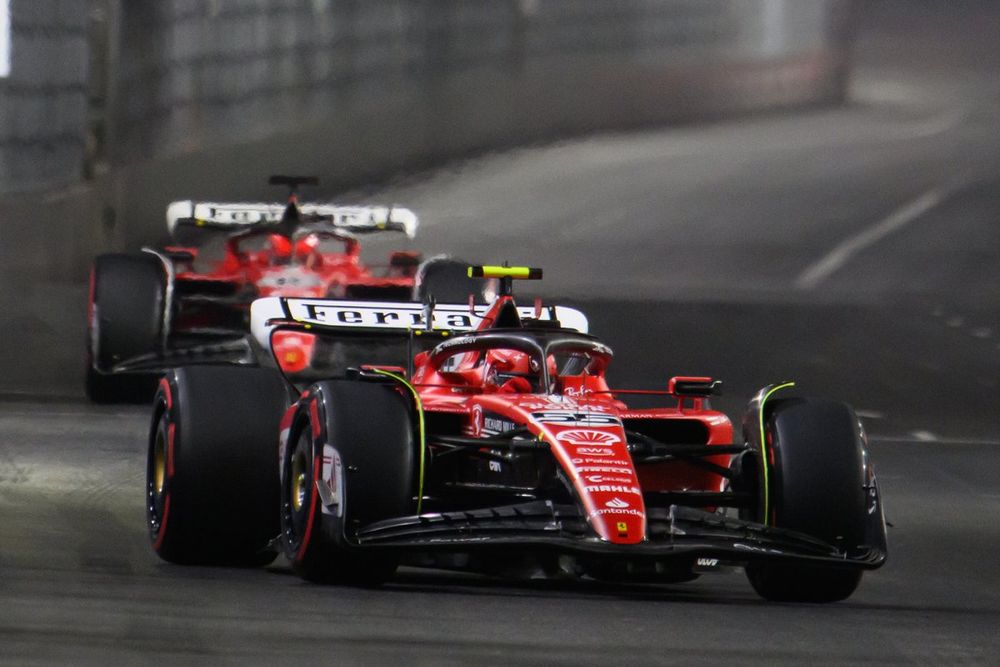Ferrari arrived at the start of 2023 with an evolution of the 2022 car that challenged Red Bull at the start of last season but then faded away.
The SF-23 again proved promising over one lap but struggled from wild aerodynamic inconsistencies that made it struggle over a race stint, especially on hot, high-downforce circuits.
Ferrari embarked on an aggressive development project in Maranello, but while it added aerodynamic load and mitigated some of its weaknesses through a range of updates, it failed to fully get on top of its race pace issues.
Chassis chief Cardile explained the team soon found the SF-23’s chassis a limiting factor of much more it could achieve.
“The 2023 car has been developed in continuity with the 2022 car, trying to improve some limitations of the previous car,” Cardile told select media, including Motorsport.com.
“All in all, our goal has been achieved because the car on track behaved exactly how it has been developed.
“The problem was that soon we realised that the direction we took was not the most profitable, so we reviewed internally our targets for the aero development. The first step has been with the spring package, where we changed the floor and bodywork, followed by another step in Austria.
“But then we reached the limitations of the architecture or what we were able to do with the chassis.”
Photo by: Erik Junius
Carlos Sainz, Ferrari SF-23
Under the cost cap introducing a B-spec chassis during the season is not feasible, so a team’s initial chassis design as well as other packaging choices limit the extent to which it can re-develop.
For Ferrari, these constraints were mainly related to the sidepods, with its decision to place the lower of the mandatory side impact spars as high as it could coming back to bite it.
“The limitations were mainly on the chassis, because the main difference between our car and the Red Bull style car was under the radiator inlet and the pod design, ours was fatter than the Red Bull one,” Cardile explained.
“The reason why is because we were using this portion of the bodywork to pressurise the area in front to control the tyre wake. On the other hand, digging below the radiator inlet we can promote a better flow towards the rear end of the car, benefiting in terms of the rear load but then we have to recover the tyre wake control somewhere else.
“By having this ‘fatter’ pod we didn’t need to design a very 3D shape in the chassis because we put the…
Click Here to Read the Full Original Article at Motorsport.com – Formula 1 – Stories…

